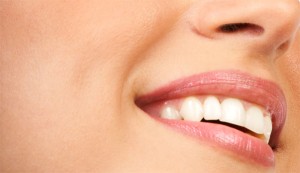 Usually a dimple is a flaw or deformity in one of the muscles of the face. Instead of moving freely during a smile, a person with dimples has a portion of skin drawn up tightly with the cheek muscle. This pulling action is why you see a little divot when someone with dimples smiles. Because this “flaw” really only involves one cheek muscle and one section of skin on each side of the face, the surgical process for creating dimples is rather straightforward.
Usually a dimple is a flaw or deformity in one of the muscles of the face. Instead of moving freely during a smile, a person with dimples has a portion of skin drawn up tightly with the cheek muscle. This pulling action is why you see a little divot when someone with dimples smiles. Because this “flaw” really only involves one cheek muscle and one section of skin on each side of the face, the surgical process for creating dimples is rather straightforward.
Dimple creation is a quick, relatively painless, outpatient procedure. The face is numbed with a little local anesthetic. In a few minutes after the local anesthetic has taken effect, the plastic surgeon places a suture (stitch) between the cheek muscle (buccinator) and the skin just over top of that muscle. At first the suture makes it look like there is a dimple present at all times; however the structures of the face will relax to a point that the cosmetic dimples will only show when the patient actively smiles.
The suture that is used when creating dimples is an absorbable suture, which means it does not need to be removed. Instead, the suture is dissolved by the body. The area around the suture actually creates a small scar. This is not exactly like the scars that you may have on your skin. Rather, the scar that forms during dimple creation surgery is inside the cheek and cannot be seen from the outside. This scar tissue permanently holds the skin to the cheek muscle.
While dimple creation is a permanent procedure that does not mean that all cosmetic dimples are irreversible. Depending on the approach used in the initial surgery, dimple creation may be reversible. In the reversal, the scar tissue in the cheek is cut and the skin is separated from the underlying muscle. With a few snips, the cosmetic dimples are gone. Note, not all dimple creation procedures are reversible; consult your doctor.
The usual complications from dimple creation surgery are swelling and bruising. These are mild and temporary in most cases. If you are concerned about the appearance of bruises and swelling, you may take a few days off work; however, there is rarely a medical need to take time off after dimple creation surgery. Also, there are usually no restrictions on diet or exercise after the procedure.
If you choose a surgeon that routinely performs reversible dimple creation surgeries, there is very little risk associated with the procedure. Aside from being a procedure with few complications, if you are unhappy with the result, you can have the suture removed or have the cosmetic dimples reversed (in most cases).
